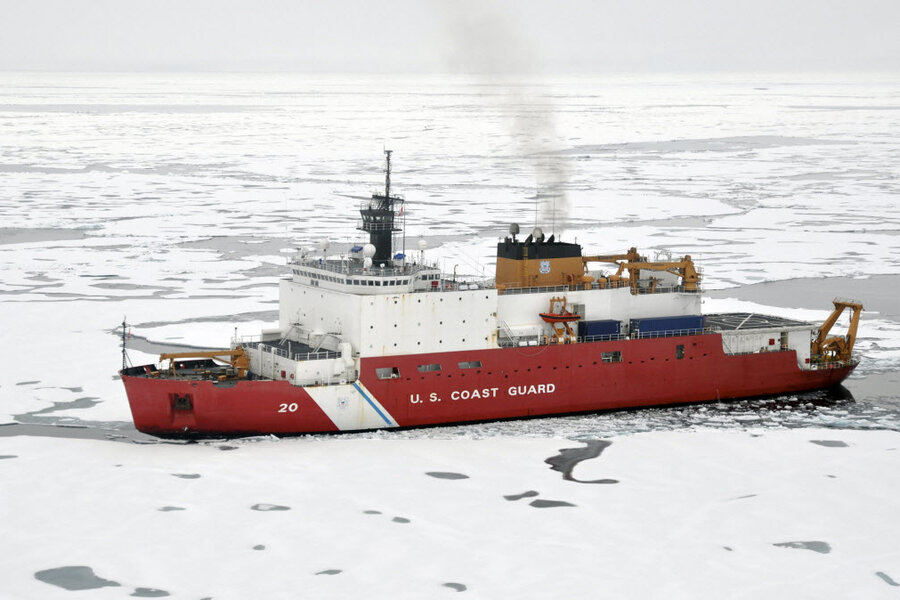In historic first, US icebreaker reaches North Pole: What will it do there?
Loading...
Our nation's youngest icebreaker – US Coast Guard Cutter Healy – is all grown up, becoming the first US surface ship Saturday to make the trip to the North Pole unaccompanied.
Submarines normally follow ships underneath the ice.
Admittedly, "all grown up" might be the wrong phrase, Healy is a 420-foot, 16,000-ton, 30,000-horsepower ship, that’s capable of breaking more than 10 feet of ice.
The vessel made the journey from Dutch Harbor, Alaska, in less than a month, powering through the frigid water and enormous blocks of ice one week ahead of schedule.
In addition to helping the Coast Guard’s law enforcement mission and search-and-rescue efforts, the ship functions as a research platform replete with lab spaces, oceanographic deck winches, and berthing for 50 scientists.
Healy’s northern expedition is part of the GEOTRACES mission, which is an international research effort to study the world’s oceans.
"As the Arctic region continues to open up to development, the data gathered on board Healy during this cruise will become ever more essential to understanding how the scientific processes of the Arctic work, and how to most responsibly exercise stewardship over the region," said the Coast Guard in a statement.
The trip to the top of the world began on Aug. 9 and was funded by the National Science Foundation.
Scientists aboard the Healy attempted to gather ice samples and measurements while on the voyage, but found slushy conditions, instead of solid ice until they were within 100 miles of the North Pole, they said in a press release.
"It’s hard to believe how slushy the ice has been so close to the pole; this was the first area we were confident enough in the ice conditions to allow on-ice science experiments," they wrote. "Despite being thick, the ice we encountered further south was simply too soft and unstable to safely put individuals on."
Healy’s groundbreaking – more accurately icebreaking – mission comes after President Obama pressed the need for the United States to acquire more icebreakers during a three-day trip to Alaska earlier this month.
In a speech, the president said that the lack of icebreakers in the American fleet risks control of shipping routes, oil fields, and fishing grounds, and protected habitat, not to mention the ability for the US to perform emergency search-and-rescue operations.
The 420 ft, 16,000 ton Healy is one of only two active US icebreakers; the other is the smaller but stronger Polar Star, measuring 399 feet long and 11,000 tons. That compares with 40 icebreakers for Russia, with 11 more on the way.
The president’s proposal speeds up the acquisition of a new heavy-duty Arctic ice breaker by two years, to 2020, and calls on Congress to fund the construction of additional vessels.
Climate change has rapidly changed the landscape of the Arctic region. Melting sea ice has opened up the area for new opportunities, but also stepped up international rivalries as the US struggles to assert itself into the space.
Russia has continued to grow its influence itself in the Arctic. Last month, Russia submitted a claim to the United Nations to expand its territory by some 463,000 square miles of the Arctic sea shelf, extending more than 350 nautical miles from the country's shore.
This report contains materials from the Associated Press.






